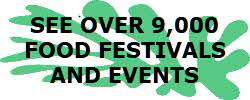FoodReference.com (since 1999)
COOKING TIPS AND HINTS SECTION
Home | Articles | Food Trivia | Today in Food History | Food Timeline | Recipes | COOKING_TIPS | Food Quotes | Who’s Who | Culinary Schools & Tours | Food_Trivia_Quizzes | Food Poems | Free Magazines | Food Festivals and Events
Cooking and Kitchen Tips and Hints, Measurements, Shopping Advice, Serving Ideas, etc.
Cutting Boards
There is still some dispute over the use of wooden versus plastic cutting boards. The bottom line though, is that if you thoroughly scrub with soap and hot water after each use, either type is safe. Plastic cutting boards may be cleaned in the dishwasher. Wooden cutting boards can be brushed/scraped salt after washing as added precaution. Plastic cutting boards should be bleached with a very strong bleach solution to prevent black mold.
CUTTING BOARD SAFETY.
Never allow raw meat, poultry and fish to come in contact with other foods. Improper washing, such as with a damp cloth, will not remove bacteria. And washing only with soap and water may not do the job, either.
To prevent cross-contamination from a cutting board, the FDA advises consumers to follow these practices:
- Use smooth cutting boards made of hard maple or a non-porous material such as plastic and free of cracks and crevices. These kinds of boards can be cleaned easily. Avoid boards made of soft, porous materials.
- Wash cutting boards with hot water, soap, and a scrub brush to remove food particles. Then sanitize the boards by putting them through the automatic dishwasher or rinsing them in a solution of 1 teaspoon (5 milliliters) of chlorine bleach in 1 quart (about 1 liter) of water.
- Always wash and sanitize cutting boards after using them for raw foods and before using them for ready-to-eat foods. Consider using one cutting board only for foods that will be cooked, such as raw fish, and another only for ready-to-eat foods, such as bread, fresh fruit, and cooked fish. Disposable cutting boards are a newer option, and can be found in grocery and discount chain stores.
(Compiled from the FDA Consumer - latest revision, July 2002)
FDA's Food Information Line
1-888-SAFEFOOD (1-888-723-3366)
Recorded messages 24 hours a day, every day. FDA public affairs specialists available 10 a.m. to 4 p.m. Eastern time, Monday through Friday.
COOKING TIPS
Please feel free to link to any pages of FoodReference.com from your website.
For permission to use any of this content please E-mail: james@foodreference.com
All contents are copyright © 1990 - 2025 James T. Ehler and www.FoodReference.com unless otherwise noted.
All rights reserved. You may copy and use portions of this website for non-commercial, personal use only.
Any other use of these materials without prior written authorization is not very nice and violates the copyright.
Please take the time to request permission.

